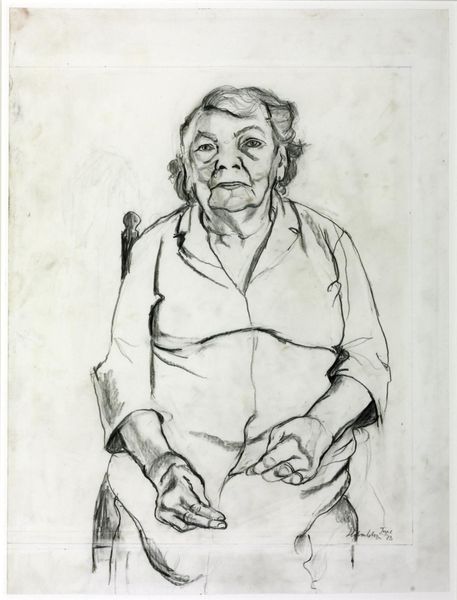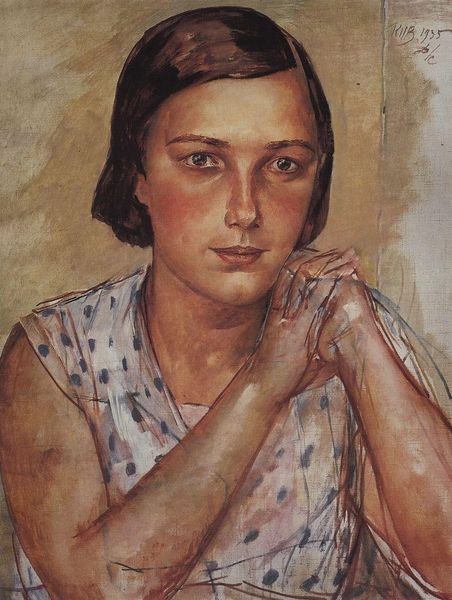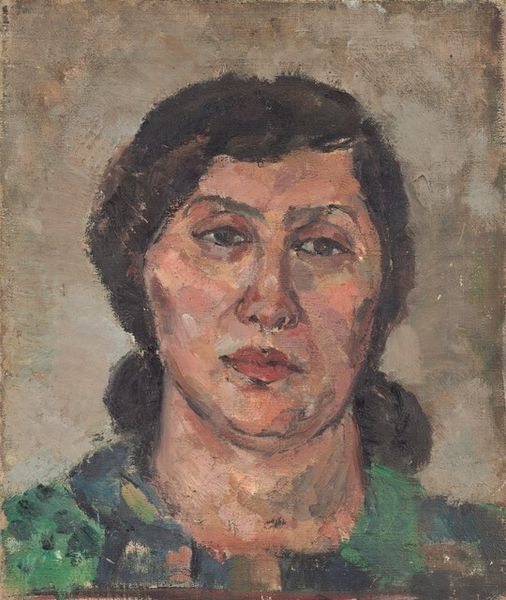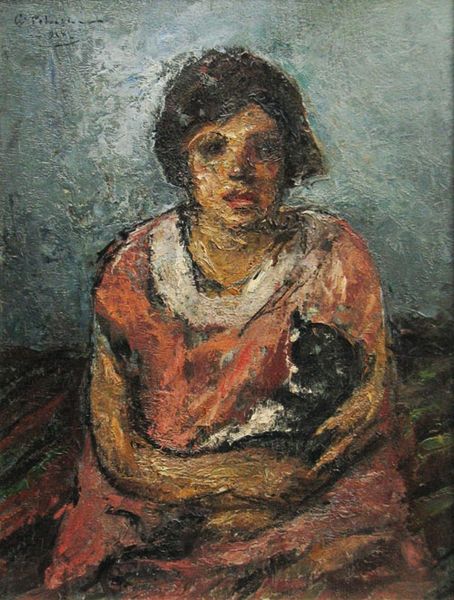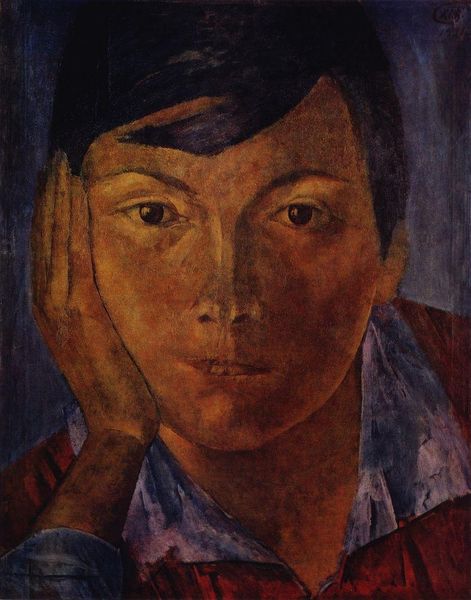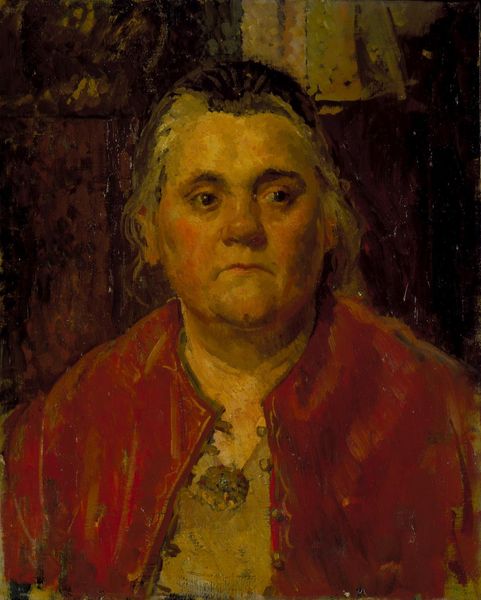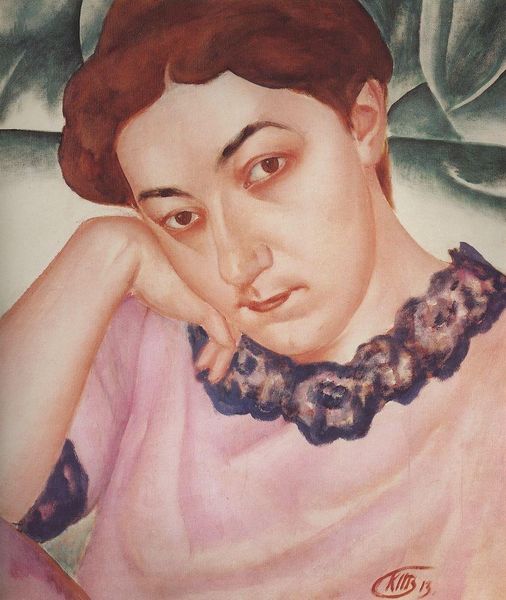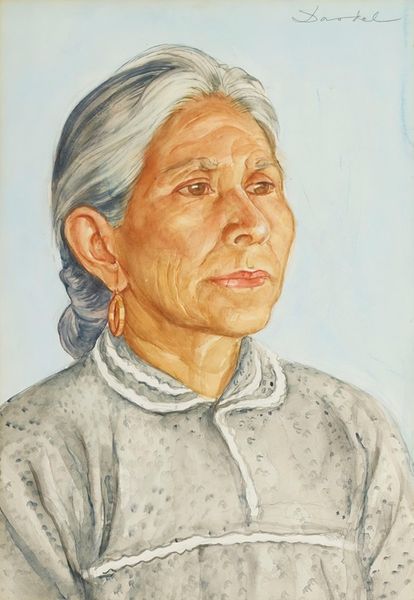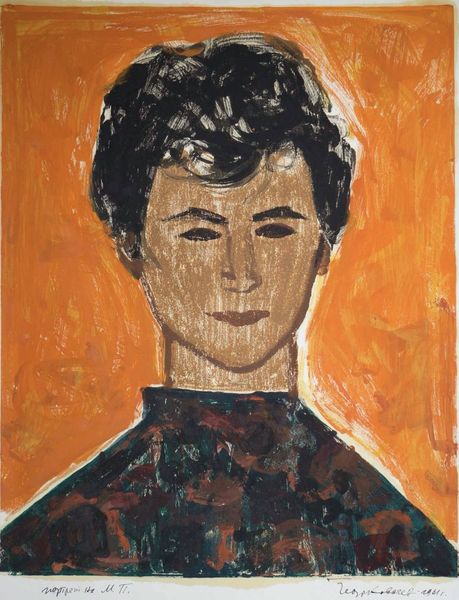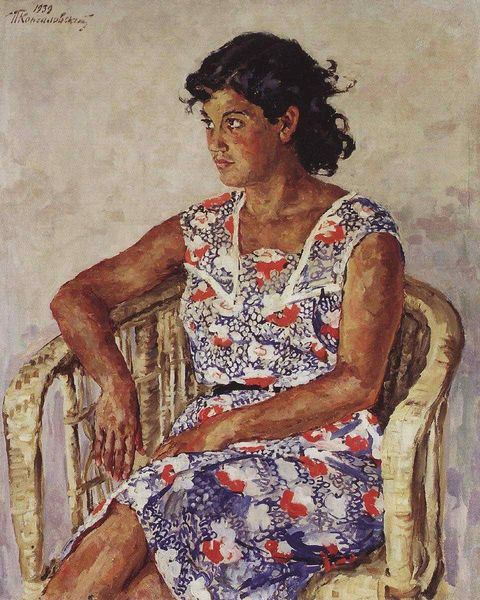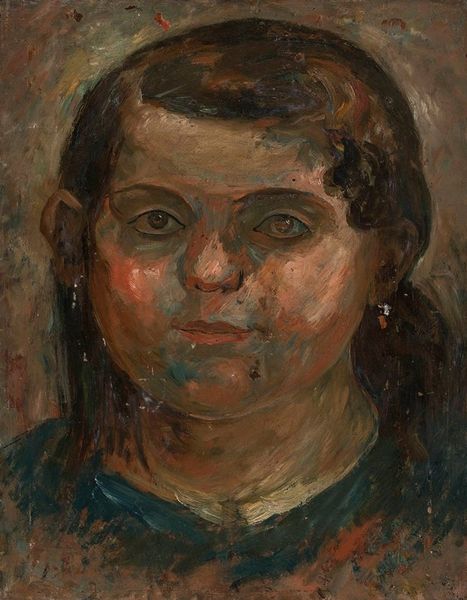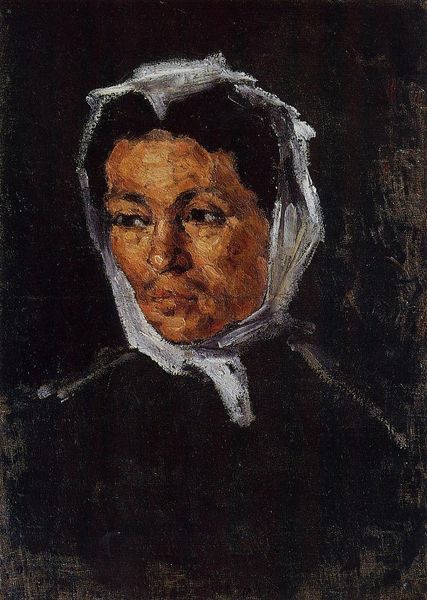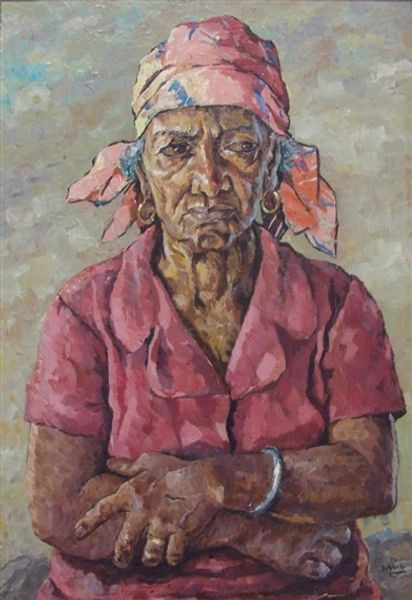
oil-paint
#
portrait
#
contemporary
#
head
#
oil-paint
#
figuration
#
oil painting
#
portrait reference
#
portrait head and shoulder
#
animal drawing portrait
#
portrait drawing
#
facial study
#
facial portrait
#
forehead
#
portrait art
#
fine art portrait
#
realism
#
digital portrait
Dimensions: 41 x 32 cm
Copyright: Creative Commons NonCommercial
Editor: Here we have Alfred Freddy Krupa’s “Portrait of Mila Skukan (born Dobrosavljević) alla prima,” painted in 1995, using oil paints. The texture seems really expressive, you can almost feel the impasto. What stands out to you in terms of how the artist has used the material of the paint itself? Curator: The ‘alla prima’ technique itself is crucial. Think about the conditions of artistic production in the late 20th century, where speed and immediacy were valued. Applying paint directly, wet-on-wet, eliminates layering, reducing production time and making each brushstroke crucial. How does this immediacy impact the portrait's perceived authenticity, in your view? Editor: I guess it makes it feel more raw and less posed, a quicker capture of the sitter's likeness and personality. Almost as if it's a fleeting moment preserved in paint. But why choose oil for this technique when something like acrylics might dry faster? Curator: Oil paint inherently carries historical weight. Consider its use by masters throughout history; by choosing oil, Krupa is engaging in a conversation with artistic traditions while also reflecting on contemporary practices of artmaking. Also, the slower drying time actually facilitates blending, allowing for more subtle transitions even in an 'alla prima' work. Are you seeing any of this material conversation translated into other elements of the portrait? Editor: Maybe in the sitter's clothing? The brushstrokes create an almost textile-like quality. You can see the materiality both in the fabric of the cardigan and the pigment itself, as a form of constructed social identity. It almost looks mass produced… but painstakingly made! Curator: Exactly. It challenges notions of originality and mass production, using the unique properties of oil to hint at larger social and economic structures that frame both the artist and the sitter. The sitter is active, is real, is working with what she has available. Editor: That’s fascinating. Thinking about it that way opens up so many questions about the labour and value involved. Thanks! Curator: Indeed. Looking closely at the material tells you as much about art history as it does the portrait subject.
Comments
No comments
Be the first to comment and join the conversation on the ultimate creative platform.
